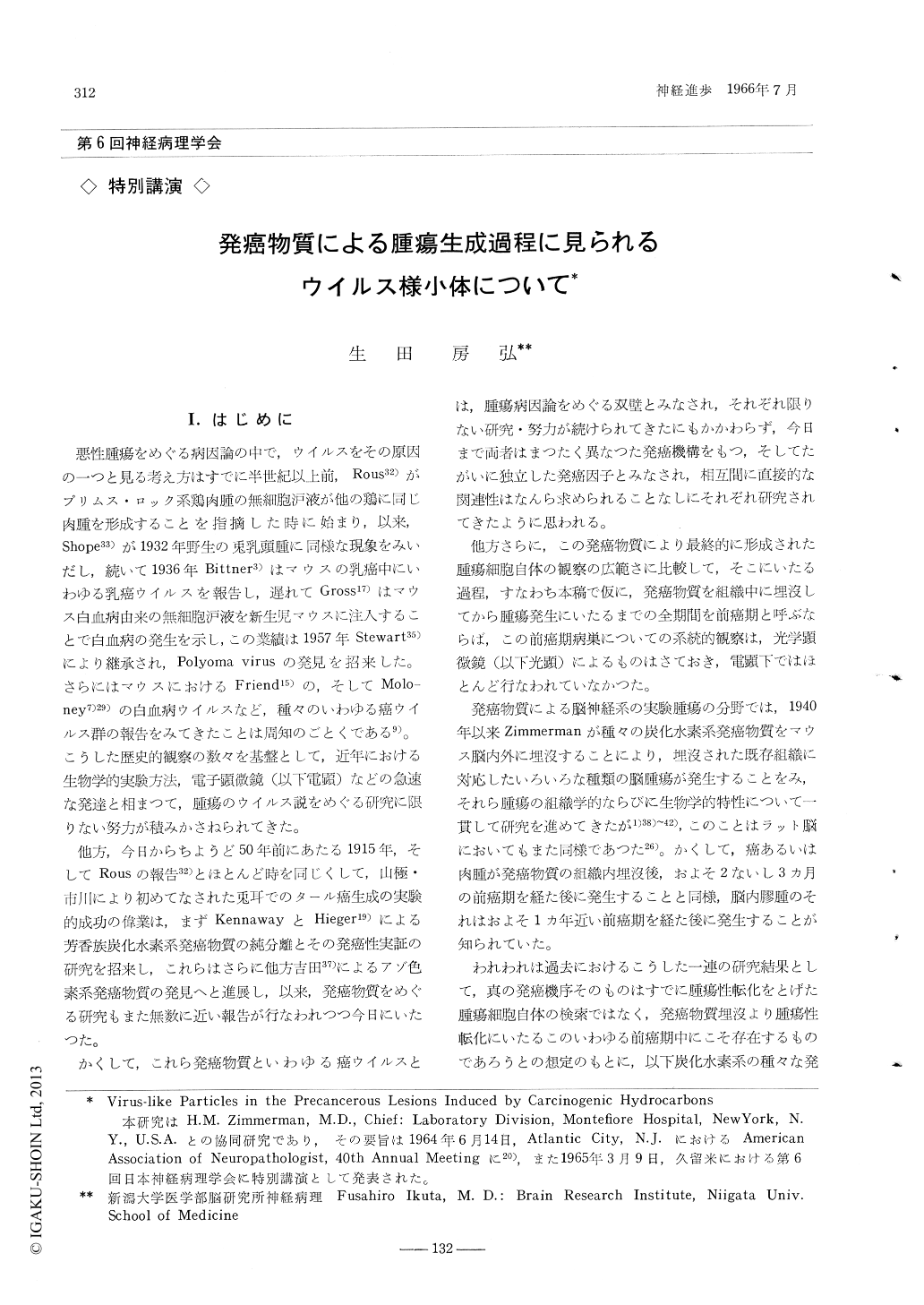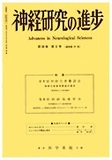Japanese
English
- 有料閲覧
- Abstract 文献概要
- 1ページ目 Look Inside
I.はじめに
悪性腫瘍をめぐる病因論の中で,ウイルスをその原因の一つと見る考え方はすでに半世紀以上前,Rous32)がプリムス・ロック系鶏肉腫の無細胞濾液が他の鶏に同じ肉腫を形成することを指摘した時に始まり,以来,Shope33)が1932年野生の兎乳頭腫に同様な現象をみいだし,続いて1936年Bittner3)はマウスの乳癌中にいわゆる乳癌ウイルスを報告し,遅れてGross17)はマウス白血病由来の無細胞濾液を新生児マウスに注入することで白血病の発生を示し,この業績は1957年Stewart35)により継承され,Polyoma virusの発見を招来した。さらにはマウスにおけるFriend15)の,そしてMoloney7)29)の白血病ウイルスなど,極々のいわゆる癌ウイルス群の報告をみてきたことは周知のごとくである9)。こうした歴史的観察の数々を基盤として,近年における生物学的実験方法,電子顕微鏡(以下電顕)などの急速な発達と相まつて,腫瘍のウイルス説をめぐる研究に限りない努力が積みかさねられてきた。
The chemical carcinogens methylcholanthrene, dibenzanthracene and benzpyrene were implanted in pellet form into the brains of C 57 BL and C 3 H mice. At intervals up to 2 years after implantation, the lesions and pellet sites were examined with the electron microscope. A total of 132 animals was studied. In the majority of cases, the reactive cells in the precancerous stage were found to contain hollow, cylindrical rods or particles in large numbers. These were mostly intracytoplasmic and were lodged within the endoplasmic reticulum in a few. The particles were morphologically identical regardless of the specific carcinogen with which they were associated. Identical rods were also present in extracranial, carcinogen-induced lesions. They had several morphological similarities to various viruses.
The particles disappeared from the reactive cells it about the time a true neoplasm could be identified. In lesions produced by other, noncarcinogenic means, no particles were ever noted.
The rods were filamentous and hollow, and had in axial hole within which were present electronlense cores. The diameters of the outer and inner ;hells forming the axial hole, measured approximately 77 m, u and 38 mp, respectively. The rods, on the other hand, may varied in length, were protein n nature, and contained ribonucleic acid. Their chemical composition was determined by enzyme ligestion studies controlled under the electron microscope. It is suggested that these particles play an important role biologically in the formation chemically induced neoplasms and in this way behave like viruses.

Copyright © 1966, Igaku-Shoin Ltd. All rights reserved.


